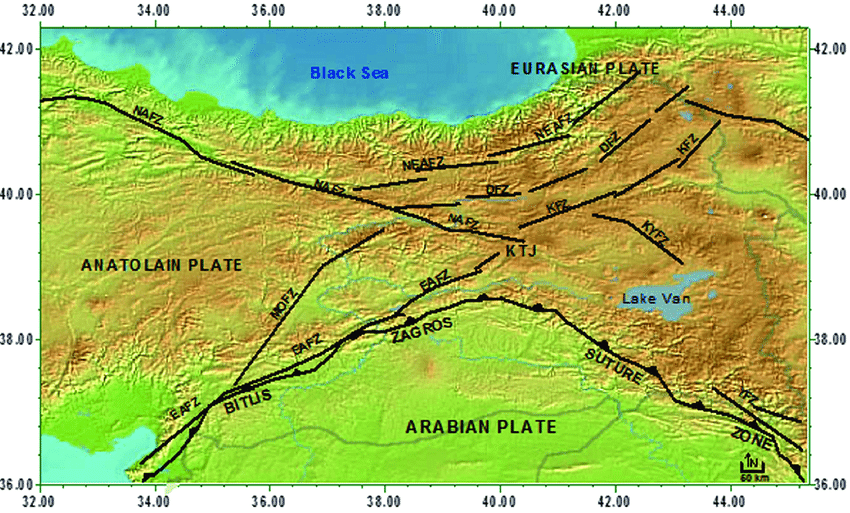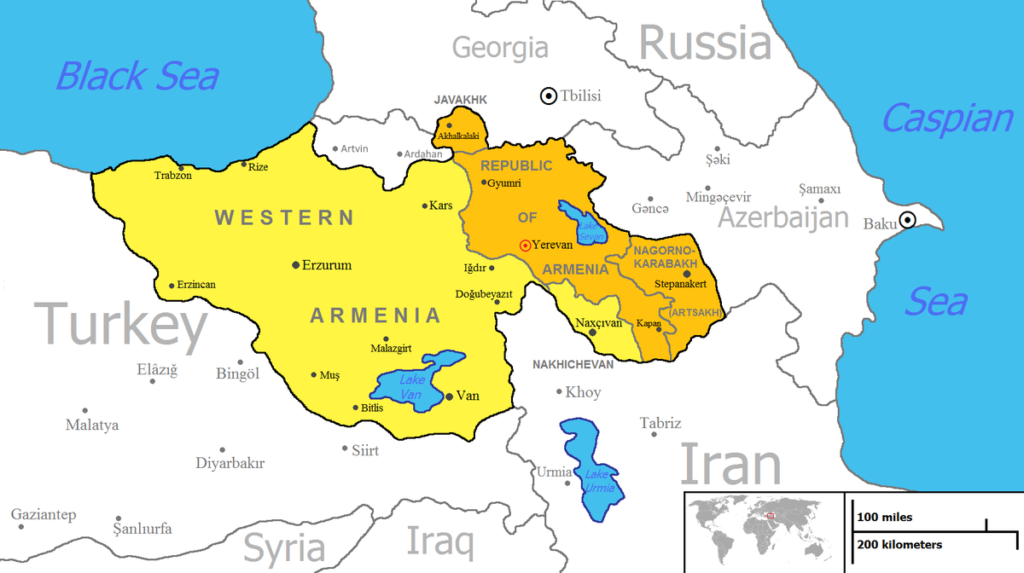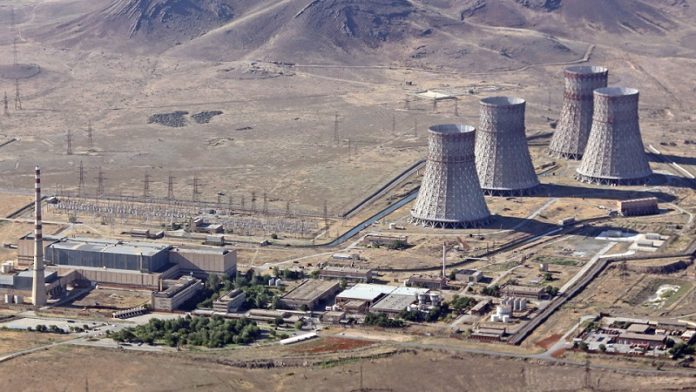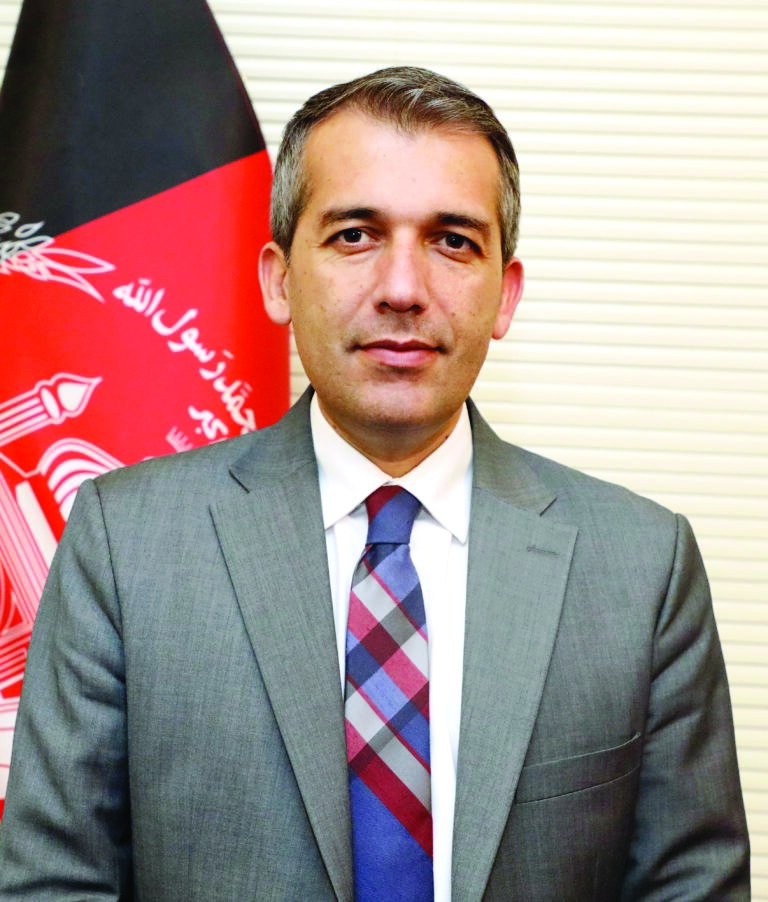Armenia’s nuclear program/ plant is an outdated one and is full of risks due to which it has been declared a “regional security threat” by many regional and international agencies as it will have severe global consequences. Moreover, Armenia’s government has been using its nuclear program as political maneuvering in the South Caucuses Region.
Despite serious concerns of the regional countries and international community at large most recently, Armenia again made a decision to extend the operation period of the second power unit of the nuclear power plant in Metsamor, and at the same time activate the construction of a new nuclear power plant. Metsamor NPP built in 1970 was closed down after the devastating earthquake in Spitak in 1988, but resumed its operation in 1995 despite international protests. Chances of even nuclear proliferation are very high in case of Armenia whose citizens have been involved in these kinds of activities in the past.
The International Atomic Energy Agency, USA & EU
The International Atomic Energy Agency, the United States as well as other Western Governments have already objected to its reopening. Washington believes the design of the 407 megawatt Metsamor reactor is one of the world’s most dangerous. There are six other plants with the same design in Bulgaria, Russia and Slovakia. What makes Armenia’s even more dangerous is the potential for earthquakes in the immediate area.
Agreement with Russia
Now Armenia intends to operate Metsamor NPP till 2026. The Armenian government reached an agreement with Russian state nuclear agency Rosatom to help keep the plant running beyond its original closing date of 2016. By any international standards of nuclear safety protocols the continued operation of Metsamor NPP would pose a big risk for the region and the world.
EU Observations
The European Union (EU) has already termed and labeled Metsamor NPP a danger to the entire region several years ago. Head of the European Union Delegation to Armenia Traian Hristea urged in March 2013 that EU continue to ask Armenia to stop using the Metsamor nuclear power plant as soon as possible.
“We have repeatedly appealed to the government of Armenia, asking it to develop a program for the conservation of the nuclear plant as soon as possible,” Hristea said.
Regional Countries Concerns
To protect human lives all the regional countries such as Azerbaijan, Turkey, and Georgia have repeatedly stressed upon Armenia to immediately close the outdated Metsamor NPP. But, Armenia remains adamant, not attaching any importance to nuclear safety which is indeed a gross violation of the protocols of IAEA too.
According to international findings Metsamor NPP was built in a nine-point seismic zone, while its reactor’s seismic resistance is designed for earthquakes with eight-point magnitude.
Natural Red Zone
Given the large number of minor earthquakes in the past 10 years in this particular area, and the intensification of seismic activity shown by seismologists’ researches, in the event of a serious accident at the Metsamor NPP not only Armenia, but also all the countries of the South Caucasus and Middle East regions would be badly affected in terms of severe health issues, drastic decrease in human fertility, lessening of agricultural productivity, immense increase in carbon footnotes, polluted waters and seas and having multiplier bad effects on socio-economic development of all the regional countries.
International Experts
International experts believe that Metsamor NPP’s reactor is the most unsafe among the six old reactors in Eastern Europe and the former Soviet Union. Despite international and regional protests, Armenia is increasing the regional nuclear threat by constructing a second power unit at the Metsamor NPP which was built in the Soviet period and does not meet current safety standards.
Armenian Parliament 2015
On May 2015, the Armenian parliament approved the decision on cooperating with Russia on the planned extension of the nuclear plant Metsamor until 2026. It also signed an inter-governmental agreement on the exchange of information related to nuclear and radiation safety with Russia which includes the Metsamor nuclear plant in October. This decision caught the attention of nuclear energy experts, because after what happened at the Fukushima Daiichi nuclear power plant in Japan, the international community decided to examine nuclear safety more closely. Considering the latest developments and ongoing concerns Metsamor is among the important cases that need to be examined.
Composition & Utility of Metsamor
| Composition & Utility | Details | International Nuclear Safety |
| Establishment | 1977 by the Soviet Union | Already expired since 40 years ago. |
| Location | 30 km away from Yerevan and 16 km away from the Turkish city of Iğdır | Too much geographical proximity increases serious dangers and increasing serious health issues in Turkish city reconfirms it. Even the animal kingdom is also at danger in this Turkish city because of the nuclear pollution and wastage. |
| Utility | 40 % Armenia’s total energy need | Global energy production trends indicate reverse of it especially after nuclear collapse in Japan. |
| Faulty Line | Exact location is prone to earthquakes | Metsamor stands on a fault line and still poses a danger for the entire region. Nuclear plants should not be built in highly active seismic zones. |
| No Containment Vessels | Since its inception it does not have any containment vessels | One of the main contributors for the deteriorating eco system in the region. |
| Faulty Design | Technically its design does not meet international security parameters | Its faulty design and location makes Metsamor among the most dangerous nuclear plants in the world. |
| Fire Safety | It was viewed as critical deficiency | It increases its more risky even in normal circumstances |
Rejection of EU Aid
In the near past, the EU offered aid to Armenia but Armenia did not accept the offer of a 200 million euros (289 million dollars) loan to finance Metsamor’s shutdown. Currently, Turkey is rightly concerned about its own national security and the security of the people living in the region. In 2009, Turkish Atomic Energy Authority openly warned about the danger of three nuclear power plants, including Metsamor considering their distance from Turkey.
European Commission Report 2014
The European Union (EU) has repeatedly called for the Metsamor plant to be closed down, arguing that it posed a security threat to the region, classifying Metsamor’s reactors as the “oldest and least reliable” category of all the 66 Soviet reactors built in Eastern Europe and the former Soviet Union. Four VVER 440 units in Bulgaria and two in Slovakia were closed as a condition of those countries joining the European Union.
The European Commission is also concerned about the safety and security of the Metsamor nuclear plant. The progress report titled “Implementation of the European Neighbourhood Policy in Armenia-Progress in 2014 and recommendations for actions” which was published in March 2015. Salient features are given below as:-
(a) Early closure and decommissioning of the MNPP (Mezdamor Nuclear Power Plant) remains a key objective for the EU and under the ENP Action Plan.
(b) Since the power plant cannot be upgraded to meet current internationally recognised nuclear safety standards, it should be closed as soon as possible.
(c) The new power plant should comply with the latest international safety standards.
(d) The decision of the Armenian government ignores the fact that there is a high risk in this region which will have long term affects. As it stands, Metsamor is a potential threat to neighboring countries particularly to Turkey. Any catastrophe related to this risky nuclear power plant will possibly destroy the lives of people in the entire region.
Operational Safety Review (OSART)
In 2011, an international team of experts from Finland, France, Lithuania, Hungary, Netherlands, Slovakia, UK, USA, EC and the IAEA conducted an Operational Safety Review (OSART) of the NPP between the dates 16 May-2 June 2011. They conducted a research study while visiting Armenia and declared that:-
METSAMOR NUCLEAR PLANT AND ITS RISKS
| Safety Risks |
| Environmental Risks |
| Seismic Risks |
| Neither the Capabilities nor the Specialists to FIGHT BACK |
US Government & Experts
The United States government, which has called the plant “aging and dangerous,” underwrote a study that urged construction of a new one. Most of its experts are of the opinion that Armenia’s Metsamor nuclear power plant poses a threat for the entire region as reactors of this plant are the “oldest and least reliable. Most of these experts personally visited the site of the nuclear plant and made recommendations for its safety practices.
They warned that the Metsamor nuclear power plant’s reactors are no more considered reliable or safe. Moreover, “The Metsamor nuclear power plant aggravates the situation and increases the risks given a seismic activity in the region”.
A US professor of mechanical and nuclear engineering, University of Idaho/Center for Advanced Energy Studies warned that “the misuse, mistaken or negligent use of a machine can indeed cause a negative outcome because a nuclear reactor contains both large amounts of energy and harmful products radioactivity, the negative outcome can be extreme damaging”. The expert added that the risk is more in the case of Armenia nuclear plants because of the lack of emergency preparedness of the operators at the plant and administration.
Graphite-based reactors such as the Metsamor reactor have a fair amount of thermal energy storage capacity but there can be boiling in the water filled tubes for extracting thermal energy.
International Atomic Energy Agency (2015)
| Challenges | Armenia’s Response | Multiplier Effects |
| Nuclear safety, Lack of Human and Financial Resources | In the mode of “denial” | Already expired and any further extension in its active life would be a danger. |
| Extension Clearness | Neither submitted nor planed | Careful safety evaluation by the regulatory body may be serious compromised. |
| IRRS Swiss Federal Nuclear Safety Inspectorate | ||
| Regulator Lapses | Extending the Operating License has not been applied or planed | It must have serious consequences. |
Lessons of Chernobyl Accident
The expert recalled that despite the lessons learned from the Chernobyl accident, one major safety barrier, a western-type containment building as opposed to a confinement building mostly for protecting against weather has not been constructed at Metsamor nuclear power plant. The world community should pay more attention and take necessary measures to address the safety issues at Metsamor nuclear power plant.
Spillover Repercussions
Unexpected fatal surprises like the Chernobyl (1986) and Fukushima (2011) accidents caused problems not only for their host countries but also for their entire respective regions. Chernobyl affected not only Ukraine but all of Europe from East to West. Western European countries like Finland, Sweden, and Germany did not escape Chernobyl’s cruel side effects. In 2007 the Finnish government stated that even after 21 years fish and mushrooms in some regions of Finland are still toxic as a result of radiation. The Metsamor nuclear power plant would also cause problems not only for all the regional countries but also to EU.
Permanent Representative of the Republic of Azerbaijan to the IAEA
The permanent representative of the Republic of Azerbaijan to the IAEA requested Armenia to respect and adhere to “Environmental Impact Assessment in a Transboundary Context” (ESPO) convention and allow the neighboring states such as Azerbaijan, Georgia, and Turkey to participate in international assessment of the planned reactor due to replace the existing Nuclear Plants. But till today the Armenian government has not allowed any regional state to visit the said nuclear plant which has increased sense of threat among all the regional countries.
The Republic of Azerbaijan for many years has been showing its concerns at all international platforms that the operation of Metsamor Plant poses a serious threat, since it was constructed with old technology and its service life has expired. Additionally, this nuclear power plant is located in the earthquake-prone region of South Caucasus and this makes its operation even more dangerous.
Irresponsible Attitude of Armenian
Due to irresponsible attitude of Armenia today, all the countries in the region, including Iran, Turkey, Georgia, Russia and Azerbaijan are exposed to the threat of suffering the same fate as that of the Chernobyl nuclear power plant, Sayano-Shushenskaya hydropower plant and the Japanese Fukushima nuclear power plant. Rather than shut down an old Metsamor nuclear power plant, which is located in a seismic zone, the Armenian government decided to extend its service life for a few more years.
Geographical Misappropriation
The Metsamor Nuclear Power Plant is just 16 kilometers from the Turkish border in an area that includes the fertile agricultural region of the Aras River valley. It’s only 36 kilometers from the capital of Yerevan, home to one-third of the nation’s population. And it is in the midst of a strong seismic zone that stretches in a broad swath from Turkey to the Arabian Sea near India. In fact, Armenia is the last country outside of Russia that still uses a Soviet-model pressurized water reactor that dates back to the 1960s.

Earthquake Zone
According to all regional and international surveys Metsamor power plant is cradled in an earthquake zone. The South Caucasus region is a zone of high seismic activity, as colliding Arabian and Eurasian tectonic plates roil destructive tremors across the Caucasus, eastern Turkey and northwestern Iran. There are five earthquake tectonic breaks near Metsamor, one is 21 miles, another is 10 miles away, and one is at a distance of less than a third of a mile. In the near past, even National Geographic highlighted Metsamor’s environmental threat, entitled, “Is Armenia’s Nuclear Plant the World’s Most Dangerous?”
Consequences of Old & New Nuclear Plants
Moreover, the proposed new plant is slated to go up right next to the old one, about 30 kilometers west of Yerevan in the town of Metsamor. A deadly magnitude 6.9 earthquake in 1988 whose epicenter was only 45 miles from Metsamor, killed more than 25,000, injured 19,000 and rendered 500,000 homeless, leaving much of northern Armenia in ruins and caused more than an estimated $16 billion in damages initially led Armenian authorities to shut down the old plant, but one of its two reactors. Metsamor was the first Soviet NPP designed to be built in a region of high seismicity. Plans for units 3 & 4 at the site were abandoned after the 1986 Chernobyl incident.
Japanese Nuclear Tragedy at Fukushima
After the deadly Japanese nuclear tragedy at Fukushima Daiichi power plant, Metsamor has come under renewed threat. Armenia is also located in an earthquake-prone zone, where the Arabian and Eurasian tectonic plates collide. Over centuries, the plates’ movements have created the Caucasus Mountains as well as regular, devastating tremors. It is feared that Metsamor nuclear power plant will share the fate of the Japanese Fukushima Daiichi nuclear power plant any time because the operating life of the Metsamor power plant ended a long time ago.
Faulty Designs
Metsamor nuclear plant does not have any containment vessel. Its VVER-440 reactor lacks a shell that would contain radiation in the event of an accident. According to US-based James Martin Center for Nonproliferation Studies an earthquake could knock out the site’s cooling system for a prolonged period of time.
Armenia: A Non-Compliant Country
Armenia has not been considering the concerns of all the regional countries as well as international nuclear agencies in terms of the safety of its nuclear plants. United Nations Economic and Social Council’s Economic Commission for Europe (UNECE) claimed that Parties to the Espoo Convention on Environmental Impact Assessment in a Transboundary Context and its Protocol on Strategic Environmental Assessment adopted a declaration on the application of those instruments to nuclear energy issues which found that “Armenia was found to be in non-compliance with its obligation to notify about the planned construction of its NPP in Metsamor.”
Terrorist Attack
It is feared that the deteriorating law and order situation within Armenian and rapidly changing geopolitical and geo-strategic trends in the region and beyond especially in the Middle East and the threat of conflicts in the Caucasus, even the slightest terrorist attack at the Metsamor nuclear power plant may lead to a catastrophe in the region.
Turkish Concerns
It is repeatedly reported in the Turkish press and in the circles of policy makers that radiation from the Metsamor nuclear power plant may be the cause of the recent growth of cancer cases in eastern provinces of Turkey, including the Igdir province. Fears are getting stronger and stronger because it is a nuclear power plant of Chernobyl type. The Chernobyl accident led to an increase in cancer cases, birth of children with a variety of pathologies in the region, and the consequences of the accident are still being felt in Turkey.
“In recent years the border areas of Turkey, including Igdir province, experienced growth of cancer cases and, pathologies regarding the newborns. There are suggestions that this is due to radiation from the Metsamor nuclear power plant.” The radiation effects are also noticeable in the provinces of Kars and Agri.
British Institute of Energy Economics & UK Transatlantic & Caucasus Studies Institute (2016)
They concluded that Armenia’s Metsamor power plant was an historical anomaly, and arguably should never have been placed on a seismic fault line. “Its placement is more to do with Soviet concepts of progress than a careful and considered approach to Armenia’s energy needs”. “If such a plant were being designed today, in accordance with safety regulations, it would never be placed in such a location.” “Even if Metsamor were to be upgraded with an additional containment structure, of the type in operation at Fukushima, Metsamor would remain vulnerable to a Fukushima level 7 nuclear accident” said the experts.
They concluded that the risks posed by the Metsamor power plant are not therefore theoretical and, like Chernobyl, the spread of radioactive materials in the event of an accident would cross national borders. It has already ruined fertile agricultural lands in this region.
High Risk of Nuclear Proliferation
The world community must awake from its slumber and must take concrete actions against so many proven attempts of Armenian citizens in the near past about nuclear proliferation in the region. The Georgian State Security Service arrested three Armenian nationals and three citizens of Georgia for attempting to illegally sell roughly $200 million of weapons-grade uranium 238.
The recent arrest was not the first. Arrests of Armenians who have crossed into neighboring Georgia have increased in the past two years. It caused alarm among nuclear non-proliferation experts in the US and elsewhere. Landlocked Armenians use Georgia for access to the Black Sea ports, which could be used to traffic nuclear material to the Middle East or anywhere else. There must be enhanced efforts in combating illicit trafficking of nuclear and radioactive materials.
World Post (2016)
Since 2014, eight Armenians have been arrested for attempting to smuggle and/ or sell nuclear materials in Georgia. In January (2016), three Armenians were arrested for attempting to bring cesium 137 across the border. In August (2014), two Armenians were arresting for the same thing”.
Study of Georgian Physicist
A Georgian physicist indicated that the risk of failure of the new plant was high because of its mountainous location, which offered limited water supply in the event of needed emergency cooling of the reactor. The world community needs to hold Armenian officials responsible for the consequences of a possible nuclear accident because of its possible disastrous impact on the entire broader region.

Concluding Remarks
Armenia nuclear power plants are posing serious security threats to all the regional countries and the EU. Its old nuclear plants/ programs and the proposed new one at Metsamor would be like permanent hell for Iran, Turkey, Russia, Georgia, Azerbaijan and even the EU. More precisely, it is not being reconstructed for mere energy production but it has certain hidden agenda of political maneuvering, strategic blackmailing and the last but not the least, phobia of hegemony in the region. No sensible country would prefer to resume and reconstruct its nuclear facilities/ installations on such a high risk earthquake zone like Metsamor.
Its station poses a threat primarily because of location in a seismic zone. Even in the case of medium strength earthquake, this nuclear power plant can cause significant environmental damage throughout the region, which is of a great economic and military strategic importance.
The Metsamor Nuclear Plants are also dangerous also in terms of technical operation, since Armenia has no mechanism and professional expertise to prevent accidents. Metsamor (Armenian) nuclear power plant was built in 1970 and is now 47 years old. After the devastating 1988 earthquake in Spitak, it was closed but in 1995 despite international protests, operations were resumed and moreover the second reactor was also launched.
According to the research studies of environmentalists and scientists from all over the region the world seismic activity of the area makes the operation of the nuclear power plant in Metsamor an extremely risky venture even in the case of construction of a new reactor.
Meanwhile, Armenia, ignoring all calls of the international community has decided to continue operation of the nuclear power plant until 2026 despite the fact that the station is located in a highly seismic zone and is based on an outdated and extremely dangerous technology.
It is feared that South Caucasus may become nuclear flash point in the near future because of the constant irresponsible behavior of the Armenia government. The threat of potential nuclear weapons, nuclear programs/ plants and nuclear proliferation will create a house of cards that will cause a complete collapse of regional peace and stability. Increasing incidents of illegal trafficking in nuclear and other radioactive materials by Armenian citizens also pose serious threats to all regional countries.
The prospects and danger of rogue actors acquiring a dirty bomb are rising. The recently detected activities in South Caucasus showed that substantial efforts have been made to smuggle and illegally sell highly radioactive uranium-238 from Armenian soil. At the beginning of 2016, an Armenian was trying to smuggle a highly radioactive cesium isotope that is usually obtained as a waste product in nuclear reactors.
All the world power brokers are busy in the conflict resolution of Iranian and North Korean Nuclear threats and are not ready to take any notice of the alarming situation in the South Caucasus where any incident of nuclear plant failure would have disastrous consequences in the region. Armenia has been a blind spot for the regional and international power brokers because of their vested socio-economic, geopolitical and geo-strategic interest in the past but now time has come when these power brokers must not remain blind anymore because humanity at large is at stake.
World movers and shakers should not forget the spillover repercussions of the failures of nuclear plants failures of Chernobyl (1986) and Fukushima (2011) which caused problems not only for their host countries but also for the far-reaching regions too. Former USSR Chernobyl damaged not only Ukraine but most of the Europe too. Western European countries i.e. Finland, Sweden, and Germany also suffered from Chernobyl’s cruel side effects. The Finnish government (2007) stated that even after 21 years fish and mushrooms in some regions of Finland are still toxic as a result of radiation. The Metsamor nuclear power plant would also cause problems not only for all the regional countries but also to EU.
Intensification of seismic activity in the event of a serious accident at the Metsamor NPP, not only Armenia, but all countries of the South Caucasus and Middle East regions would be badly affected in terms of severe health issues, drastic decrease in human fertility, lessening of agricultural productivity, immense increase in carbon footnotes, polluted waters and seas and having multiplier bad effects on socio-economic development of all the regional countries. Many border areas of Turkey have already come into the line of fire because of the proximity to Armenia nuclear plants.
Anniversary of the devastating Chernobyl accident stresses the need to have a nuclear free zone in the South Caucasus Region along with Central Asia. It is unsettling to remember that there is high risk of a similar disaster in an adjacent area of the regional countries in South Caucasus in shape of Armenia nuclear plants/ program. Nuclear safety, like nuclear security, should be taken extremely seriously now. Any outdated systems, like the one at the Metsamor nuclear plant, should be either closed down until repaired and adjusted to proper security standards, or else shut down completely. To make future prospects even grimmer, the area where the Metsamor plant is located is said to have very turbulent seismic activity. Thus, not only is the plant dangerous due to outdated security systems and technology, but also due to a naturally occurring phenomenon that is likely to cause significant damage to the plant itself. The Armenian government should not expose its own population to an expected nuclear holocaust, but it continues to stubbornly expand its grand ambitions and self-entrapment.
All the nuclear experts and their studies reconfirm that the Metsamor power plant should be seen as an imminent and serious threat to millions of people in Asia, the Middle East and Europe and shut it down immediately. Moreover, this issue should not be shielded anymore for the sake of pure power politics.
Time and again Armenia has belligerently shown its willingness to develop and acquire nuclear capabilities which is an extremely dangerous endeavor not just for the region and adjacent countries, but also for a world that should be evolving towards a nuclear-free future instead. World countries must act to prevent yet another blow to an already shaky Non-Proliferation Treaty. The Armenian nuclear program/plant poses a huge security threat to all the regional countries as well as the EU.





